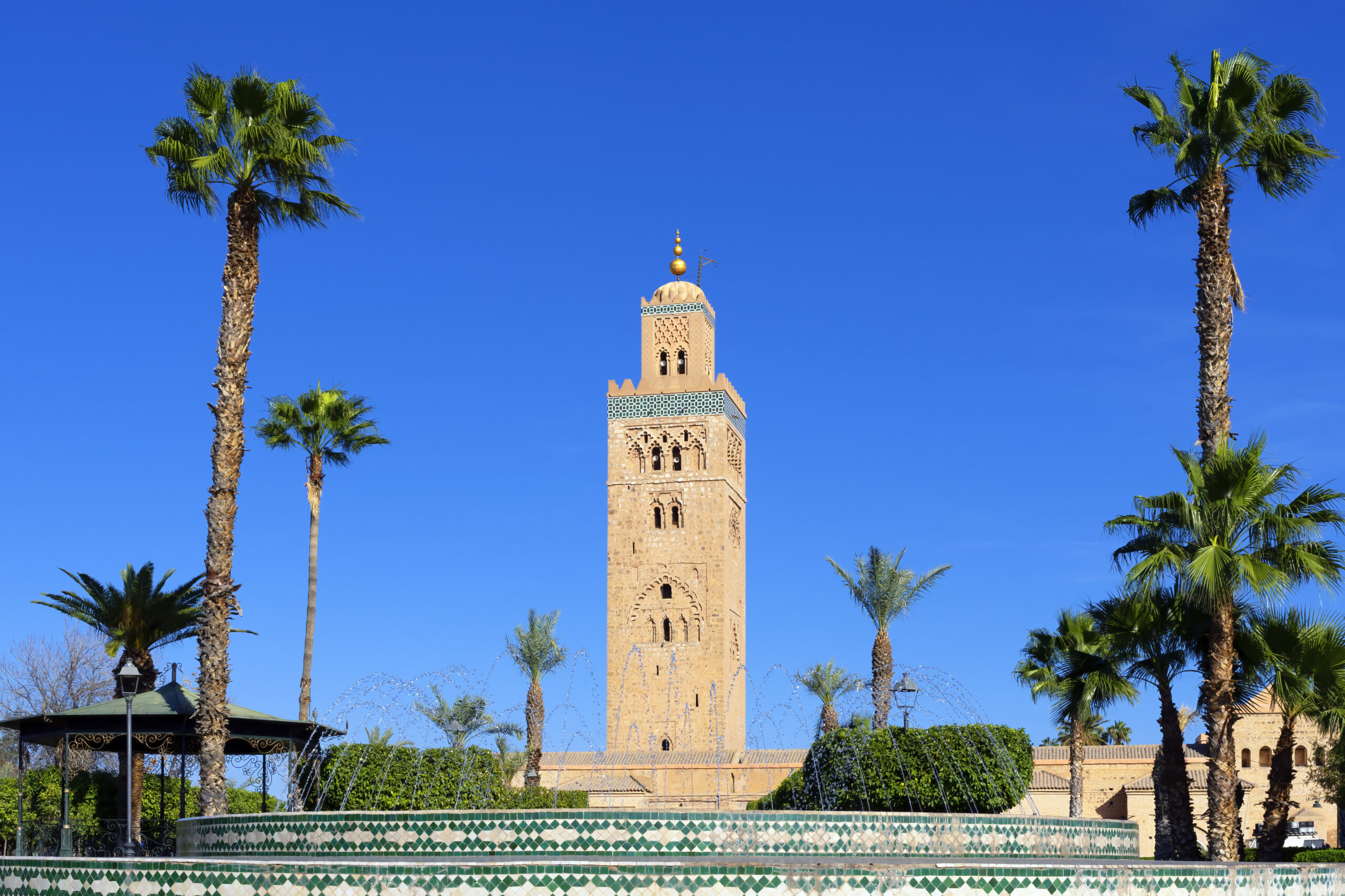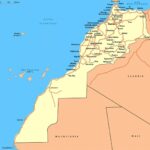How Many Days in Marrakech , Morocco? A Perfect Itinerary to Spend 3 Days in Marrakech
Marrakech, a mesmerizing city in Morocco, captivates visitors with its rich history, vibrant souks, and stunning architecture. Whether you have a day in Marrakech or plan to spend 3 days exploring its wonders, this guide will help you make the most of your time in this enchanting city. Discover why Marrakech is worth visiting and how to create the perfect Marrakech itinerary for your trip.
How Many Days in Marrakech Are Enough?
Wondering how many days you need to truly experience Marrakech? While a single day can give you a taste of its charm, 3 days in Marrakech is the ideal amount of time to explore the city’s highlights. Spending 3 days allows you to immerse yourself in the vibrant medina, visit historical sites, and enjoy the bustling souks.
For those with many days to spend in the city, extending your trip to a week can provide a deeper appreciation of Marrakech and its surroundings. This way, you can take day trips to nearby attractions like the Atlas Mountains and coastal cities, making your trip to Morocco even more memorable. Thinking about how many days in Marrakech you have can help you maximize your experience and fully enjoy everything this vibrant city has to offer.
The Best Places to Stay in Marrakech
Choosing the right place to stay in Marrakech can significantly enhance your experience in this vibrant city. Marrakech offers a diverse range of accommodations, from luxurious resorts to traditional riads, each providing a unique glimpse into Moroccan culture and hospitality. Here, we’ll explore the best places to stay in Marrakech and what you can expect from each type of accommodation.
Riad: The Heart of Moroccan Hospitality
Riads are traditional Moroccan houses or palaces with an interior garden or courtyard. Staying in a riad is one of the most authentic experiences you can have in Marrakech. These accommodations are typically located in the medina, the old part of the city, and offer a serene retreat from the bustling streets, making you appreciate how many days in Marrakech you spend.
- Architecture and Ambiance: Riads are known for their stunning architecture, featuring intricate tilework, carved wood, and lush courtyards. Many riads also have rooftop terraces with views of the medina, where guests can relax and enjoy the city’s skyline, which can influence how many days in Marrakech you plan to stay.
- Personalized Service: Riads are often family-owned, providing personalized service and a homely atmosphere. Guests can enjoy homemade Moroccan breakfasts and other meals prepared with local ingredients, adding to the reasons why considering how many days in Marrakech you stay is important.
Luxury Hotels and Resorts
For those seeking a more upscale experience, Marrakech has a range of luxury hotels and resorts that offer world-class amenities and services. These establishments are often located in the modern part of the city, known as Gueliz, or in the Palmeraie, a palm grove area on the outskirts of the city.
- Amenities: Luxury hotels in Marrakech often feature swimming pools, spas, fitness centers, and gourmet restaurants. They provide a high level of comfort and convenience, making them ideal for travelers who want to relax and indulge.
- Design and Décor: Many luxury hotels incorporate traditional Moroccan design elements, blending them with modern comforts. Expect to see lavish interiors with ornate details and lush gardens.
- Examples: Some top luxury hotels in Marrakech include La Mamounia, Royal Mansour Marrakech, and Four Seasons Resort Marrakech.
Boutique Hotels
Boutique hotels in Marrakech offer a blend of the personalized service found in riads and the amenities of larger hotels. These accommodations are often stylishly designed and located in prime areas of the city, providing a unique and intimate experience.
- Unique Design: Boutique hotels often have distinctive themes and décor, offering a more modern and chic alternative to traditional riads. They may feature contemporary art, trendy furnishings, and innovative design concepts.
- Exclusive Services: Guests can expect personalized services, such as private tours, bespoke dining experiences, and curated activities.
- Examples: Popular boutique hotels in Marrakech include El Fenn, 2Ciels Boutique Hotel, and Les Deux Tours.
Budget Accommodations
Travelers on a budget will find plenty of affordable accommodations in Marrakech, ranging from hostels to budget hotels. These options provide a comfortable and cost-effective way to experience the city without breaking the bank.
- Hostels: Marrakech has several hostels that cater to backpackers and budget travelers. These establishments offer dormitory-style rooms as well as private rooms, and often include communal areas where guests can socialize.
- Budget Hotels: Budget hotels provide basic amenities and are usually located in central areas, making them convenient for sightseeing. While they may not have the luxury of higher-end accommodations, they offer clean and comfortable stays.
- Examples: Some well-regarded budget accommodations include Riad Dia, Equity Point Marrakech, and Hotel CTM.
Choosing the Right Location
The location of your accommodation can greatly impact your experience in Marrakech. Here are some popular areas to consider:
- Marrakech Medina: Staying in the medina puts you at the heart of Marrakech’s historic center. This area is ideal for those who want to be close to the main attractions, such as Jemaa el-Fnaa, the souks, and several historic sites. However, the medina can be busy and noisy, so it’s perfect for those who enjoy vibrant and bustling environments. If you’re wondering how many days in Marrakech you need to experience its lively atmosphere, staying in the medina will give you a good sense of the city’s pulse.
- Gueliz: The modern part of Marrakech, Gueliz offers a different vibe with its wide streets, cafes, restaurants, and shopping centers. It’s less hectic than the medina and provides a more contemporary experience of the city.
- Palmeraie: Located on the outskirts of Marrakech, the Palmeraie is known for its luxury resorts and tranquil surroundings. This area is ideal for those looking for a peaceful retreat away from the city’s hustle and bustle.
When choosing your accommodation in Marrakech, consider the following tips to enhance your stay:
- Book in Advance: Especially during peak travel seasons, accommodations in Marrakech can fill up quickly. Booking in advance ensures you get the best options.
- Read Reviews: Check online reviews to get a sense of the quality and service of the accommodation. Websites like TripAdvisor, Booking.com, and Airbnb can provide valuable insights.
- Consider Your Priorities: Think about what matters most to you—be it location, price, amenities, or the type of experience you want. This will help you narrow down your choices and find the perfect place to stay.
In conclusion, Marrakech offers a wide range of accommodations to suit every traveler’s needs and preferences. Whether you’re looking for the authenticity of a riad, the luxury of a five-star hotel, or the affordability of a budget hostel, you’re sure to find the perfect place to stay in this enchanting city.
What Things to do in marrakech on Your First Day
Your first day in Marrakech should be dedicated to exploring the medina and its bustling souks. Begin your day with a visit to the iconic Koutoubia Mosque, the largest mosque in Marrakech. Although non-Muslims cannot enter, the exterior is impressive and worth admiring, making you wonder how many days in Marrakech are needed to fully appreciate its beauty.
Next, head to the medina of Marrakech, a UNESCO World Heritage Site, where you can spend a few hours wandering through the narrow streets. The medina is a maze of alleys filled with shops selling everything from spices to textiles. Don’t miss the chance to explore the many souks and experience the vibrant atmosphere, which might make you think about how many days in Marrakech are required to see it all.
In the afternoon, visit the Bahia Palace, a stunning example of Moroccan architecture. The palace features beautiful gardens, intricate tilework, and impressive courtyards. Finish your day with a traditional Moroccan dinner at a local restaurant, where you can enjoy dishes like tagine and couscous, reflecting on how many days in Marrakech are needed to truly savor the city’s culinary delights.
Crafting the Perfect 3 Days in Marrakech Itinerary
Planning a trip to Marrakech can be an exciting yet daunting task, given the city’s rich history, vibrant culture, and numerous attractions. To make the most of your visit, a well-structured itinerary is essential. Here’s a detailed guide to crafting the perfect 3-day Marrakech itinerary, ensuring you experience the best of what this magical city has to offer.
How Many days in Marrakech ? Why 3 Days ?
Three days is an ideal amount of time to spend in Marrakech. It allows you to explore the city’s main attractions without feeling rushed. With a thoughtfully planned itinerary, you can immerse yourself in the local culture, visit historical sites, and enjoy the unique atmosphere of the city. Here’s how you can make the most of your 3 days in Marrakech:
Day 1: Exploring Marrakech ,The Heart of the city
Morning: Start with the Essentials
Koutoubia Mosque
Begin your journey at the iconic Koutoubia Mosque, the largest mosque in Marrakech. Its towering minaret is a defining feature of the city’s skyline. While non-Muslims cannot enter the mosque, you can appreciate its stunning exterior and the surrounding gardens.
Jemaa el-Fnaa
Next, head to Jemaa el-Fnaa, the bustling main square and a UNESCO World Heritage Site. In the morning, the square is relatively quiet, making it a good time in Marrakech to explore before it becomes livelier later in the day.
Menara Marrakech Garden
Afternoon: Dive into the Medina
The Souks:
Wander through the medina’s narrow alleyways and explore the souks. These traditional markets are a sensory overload, filled with the sights, sounds, and smells of Marrakech. From spices and textiles to jewelry and pottery, the souks offer a wide variety of goods.
Bahia Palace
After shopping, visit the Bahia Palace, a masterpiece of Moroccan architecture. The palace features intricate tilework, ornate ceilings, and beautiful gardens, providing a glimpse into the opulent lifestyle of the 19th-century Moroccan elite.
Evening: Traditional Moroccan Dinner
Dining Experience
End your first day with a traditional Moroccan dinner. Head to one of the many rooftop restaurants around Jemaa el-Fnaa for a meal with a view. Enjoy classic dishes like tagine, couscous, and pastilla while soaking in the vibrant atmosphere of the square at night.
Day 2: Historical and Cultural Immersion
Morning: Historical Sites
Saadian Tombs
Start your second day with a visit to the Saadian Tombs. Dating back to the 16th century, these tombs are the final resting place of members of the Saadian dynasty. The site was rediscovered in 1917 and is known for its beautiful decoration and historical significance.
El Badi Palace
Next, explore the El Badi Palace, once a grand royal palace now in ruins. Despite its current state, the palace offers a fascinating glimpse into Morocco’s past and provides stunning views from its terraces.
Afternoon: Art and Nature
Jardin Majorelle
In the afternoon, head to the Jardin Majorelle, a botanical garden designed by French artist Jacques Majorelle and later restored by fashion designer Yves Saint Laurent. The garden’s vibrant colors and exotic plants provide a peaceful escape from the city’s hustle and bustle.
Yves Saint Laurent Museum
Adjacent to the garden is the Yves Saint Laurent Museum, which houses an impressive collection of the designer’s work and showcases his connection to Marrakech.
Evening: Cooking Class or Rooftop Dinner
Cooking Class
For a unique cultural experience, consider taking a Moroccan cooking class. Learn how to prepare traditional dishes and enjoy the fruits of your labor.
Rooftop Dinner
Alternatively, dine at a rooftop restaurant to enjoy panoramic views of the city as the sun sets.
Day 3: Day Trip to the Atlas Mountains
Morning: Departure to the Atlas Mountains
Scenic Drive
On your final day, take a day trip to the Atlas Mountains. The drive offers breathtaking views of the Moroccan countryside, and you’ll have the opportunity to visit traditional Berber villages.
Afternoon: Exploring and Hiking
Berber Villages
Explore the Berber villages and experience the local way of life. You might visit a local home, enjoy a traditional lunch, and learn about Berber culture and traditions.
Hiking
Depending on your fitness level and interests, you can take a short hike to enjoy the stunning landscapes. The Ourika Valley is a popular destination, known for its beautiful scenery and waterfalls.
Evening: Relaxing Hammam Experience
Hammam
Return to Marrakech in the evening and unwind with a visit to a traditional hammam in marrakech. These public bathhouses offer a relaxing and rejuvenating experience, perfect for ending your trip on a tranquil note.
Additional Tips for Crafting Your Itinerary
- Flexibility: While it’s important to have a plan, allow for some flexibility in your schedule. Marrakech can be overwhelming, and you might want to take breaks or spend more time in certain places. This is particularly true when deciding how many days in Marrakech you will need.
- Guided Tours: Consider joining guided tours for a deeper understanding of the historical and cultural sites. Local guides can provide valuable insights and enhance your experience, making the most of how many days in Marrakech you have.
- Local Transportation: Use local transportation options like taxis or hire a private driver for day trips. Navigating Marrakech on your own can be challenging, especially if you’re unfamiliar with the city, and knowing how many days in Marrakech you have can help plan these logistics better.
Crafting the perfect 3-day Marrakech itinerary ensures you make the most of your visit to this captivating city. From exploring the bustling medina and historical sites to enjoying a day trip to the Atlas Mountains, you’ll experience the best of Marrakech’s culture, history, and natural beauty. Whether it’s your first visit or a return trip, a well-planned itinerary will help you create unforgettable memories in Marrakech. Deciding how many days in Marrakech you will spend is the first step to an unforgettable adventure.
Exploring the Medina: A Must-Do in Marrakech
The medina of Marrakech is the heart of the city and a must-visit for any traveler. This ancient part of the city is filled with narrow alleys, bustling markets, and historical landmarks. Exploring the medina gives you a glimpse into the daily life of Marrakchis and allows you to experience the vibrant culture of Morocco .
As you wander through the medina, you’ll encounter numerous souks, each specializing in different goods. From spices and ceramics to leather goods and textiles, the souks offer a wide variety of products. Bargaining is expected, so don’t be afraid to negotiate for the best price.
The medina is also home to several important landmarks, including the Ben Youssef Madrasa, a stunning 14th-century Islamic school, and the Marrakech Museum, which showcases Moroccan art and artifacts. Spend a day exploring the medina, and you’ll understand why it’s considered the soul of Marrakech.
Enjoying Many Days in Marrakech: Extended Itinerary Ideas
If you have many days to spend in Marrakech, consider extending your itinerary to include more of what the city and its surroundings have to offer. With a week or more, you can take additional day trips and explore lesser-known attractions.
Extended Itinerary Ideas:
- Visit the Ourika Valley and hike to the Setti Fatma waterfalls
- Take a day trip to Essaouira, a charming coastal town
- Explore the Agafay Desert and enjoy a camel ride or quad biking
- Visit the Anima Garden, an artistic botanical garden outside of Marrakech
Having many days in Marrakech allows you to experience the city at a more relaxed pace and discover hidden gems that are often missed by tourists on shorter visits.
When is the Best Time to Visit Marrakech?
Choosing the best time to visit Marrakech can greatly enhance your experience of this vibrant city in Morocco. Marrakech is known for its hot climate, bustling souks, and rich cultural heritage, but the time of year you visit can significantly impact your comfort and the activities available to you. Here, we’ll provide more background and context to help you decide the ideal time to plan your trip to Marrakech and consider how many days in Marrakech will allow you to make the most of your visit.
Understanding Marrakech’s Climate
Marrakech has a semi-arid climate, characterized by hot summers and mild winters. The city experiences a significant variation in temperatures throughout the year, making some months more suitable for travel than others.
- Summer (June to August): Summers in Marrakech can be extremely hot, with daytime temperatures often exceeding 40°C (104°F). The heat can be intense, especially for those not accustomed to such high temperatures. While the city is less crowded during this time, the heat can limit outdoor activities and sightseeing.
- Winter (December to February): Winters are mild, with daytime temperatures ranging from 15°C to 20°C (59°F to 68°F). Nights can be quite chilly, sometimes dropping to around 5°C (41°F). Winter is a quieter time to visit, and while it’s generally comfortable for exploring the city, some might find the cooler nights less appealing.
- Spring (March to May): Spring is one of the best times to visit Marrakech. The weather is pleasant, with temperatures ranging from 20°C to 30°C (68°F to 86°F). The city’s gardens are in full bloom, and the comfortable weather allows for extensive exploration of the medina, historical sites, and outdoor activities.
- Autumn (September to November): Autumn is another excellent time to visit. The summer heat begins to wane, and temperatures become more moderate, making it ideal for walking tours, visiting the souks, and enjoying the city’s many attractions.
Factors to Consider
When planning your visit to Marrakech, consider the following factors to determine the best time for your trip:
Weather Conditions
The weather is a crucial factor. Spring and autumn offer the most comfortable temperatures for sightseeing and outdoor activities. These seasons provide a balance between warmth and comfort, allowing you to explore the city without the extremes of summer heat or winter chill.
Tourist Crowds
Marrakech is a popular tourist destination, and the number of visitors can vary significantly with the seasons. Spring and autumn are peak tourist seasons due to the favorable weather. If you prefer fewer crowds, consider visiting during the winter months. However, keep in mind that some attractions and riads might be less crowded but also less lively.
Cultural Events and Festivals
Marrakech hosts several cultural events and festivals throughout the year that can enrich your travel experience. For example:
- Marrakech International Film Festival (usually held in December): This festival attracts filmmakers and movie enthusiasts from around the world.
- Marrakech Popular Arts Festival (July): A celebration of traditional Moroccan arts, including music, dance, and folklore, providing a unique cultural experience despite the summer heat.
- Ramadan: The Islamic holy month of Ramadan can also impact your visit. During this period, many local businesses and restaurants may operate on reduced hours. However, it’s a unique time to experience Moroccan culture and traditions.
Budget Considerations
Travel costs can fluctuate depending on the season. Peak tourist seasons (spring and autumn) generally see higher prices for accommodations and flights. If you’re traveling on a budget, consider visiting during the shoulder seasons (late winter and early summer) when prices might be lower, and the weather is still manageable.
Recommended Travel Periods
Based on the above factors, the best times to visit Marrakech are:
- March to May (Spring): Ideal for pleasant weather, blooming gardens, and a vibrant atmosphere. This is the perfect time for first-time visitors to enjoy all that Marrakech has to offer.
- September to November (Autumn): Excellent for comfortable temperatures and fewer crowds compared to spring. This season is great for exploring the city’s attractions and enjoying outdoor activities without the peak tourist rush.
Personal Preferences and Activities
Your personal preferences and the type of activities you plan to do should also guide your decision. For example:
- If you enjoy cooler weather and fewer tourists, winter might be your preferred time to visit. This season is also great for those interested in experiencing Marrakech’s cultural events like the International Film Festival.
- If you’re keen on hiking or outdoor adventures, spring and autumn offer the best weather conditions for such activities. You can plan excursions to the Atlas Mountains or day trips to the surrounding countryside.
- If you want to experience local festivals and traditions, consider aligning your visit with specific events or cultural festivals that interest you.
Discovering the Souks: Shopping in Marrakech
Shopping in the souks is one of the highlights of any trip to Marrakech. The souks are a labyrinth of stalls and shops selling a wide variety of goods, from spices and jewelry to carpets and pottery. Each souk specializes in different products, and exploring them is an adventure in itself, making you wonder how many days in Marrakech you need to fully experience the market scene.
One of the most famous souks is the Souk Semmarine, known for its vibrant atmosphere and diverse range of products. Here, you can find everything from leather goods to traditional Moroccan clothing. Another must-visit is the spice souk, where you can buy exotic spices like saffron, cumin, and cinnamon.
Bargaining is an essential part of shopping in the souks, so be prepared to negotiate for the best prices. The experience of haggling with local vendors is part of the fun and adds to the vibrant atmosphere of the souks, making you consider how many days in Marrakech you should plan to spend exploring these bustling markets.
Day Trips from Marrakech: What to Explore Outside the City
Marrakech is a great base for exploring the surrounding region, and there are several day trips that you can take to experience more of what Morocco has to offer.
Atlas Mountains: A day trip to the Atlas Mountains is a must for nature lovers. The mountains are home to picturesque Berber villages, stunning valleys, and scenic hiking trails. You can also visit the Ourika Valley and hike to the Setti Fatma waterfalls.
честные казино с быстрыми выплатами
бездепозитные бонусы казино
играть в лучшем казино на деньги
база казино с бездепозитным бонусом
онлайн казино России
casino oyunu
Essaouira: This coastal town is known for its charming medina, beautiful beaches, and vibrant arts scene. A day trip to Essaouira allows you to enjoy the laid-back atmosphere and explore the town’s historical sites, such as the Skala de la Ville and the Essaouira Citadel.
Agafay Desert: For a unique desert experience, take a day trip to the Agafay Desert. Here, you can enjoy camel rides, quad biking, and stunning desert landscapes. The Agafay Desert is a great alternative to the more famous Sahara Desert and is just a short drive from Marrakech.


































